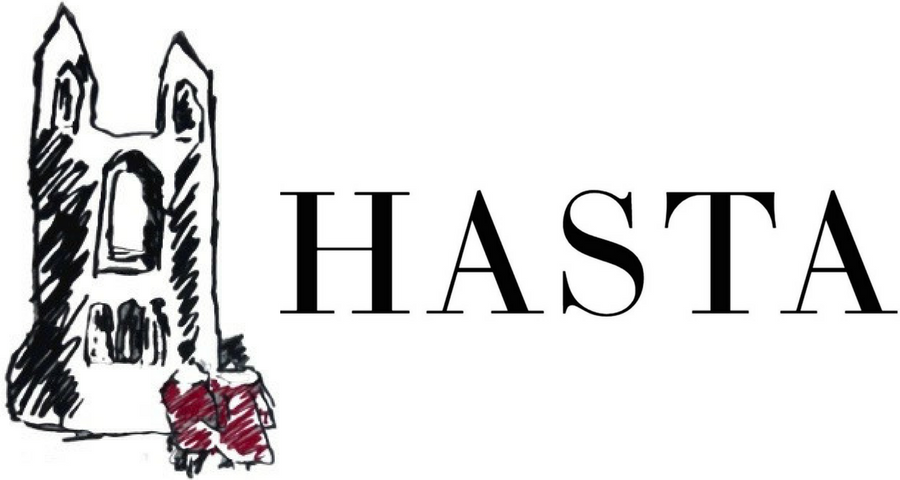Italian Renaissance Masters: Inspiring Scotland
By Anna Barlow
Exhibiting more than 80 drawings from the Royal Collection at The King’s Gallery in the Palace of Holyroodhouse, Drawing the Italian Renaissance stands as the largest display of Renaissance sketches in Scotland for more than half a century, following the exhibition’s success in London. The Royal Collection Trust devoted immense time and care to preserving these six-hundred-year-old works to exhibit to the public, although only for a short while for conservation reasons. Typically, the process of sketching is a transient one, ideas quickly recorded and then discarded, but conservators have miraculously restored and safeguarded many fragile remnants of Renaissance masters, including Bernardino Campi’s cartoon for the Virgin and Child altarpiece, which required over 120 hours of careful conservation.
Bernardino Campi, The Virgin and Child, c.1570-80. Black and white chalk.
Image courtesy of Royal Collection Trust.
The exhibition demonstrates how these ephemeral works played a multifaceted role in the Italian Renaissance, spanning a spectrum from quick preparatory sketches to autonomous, fully accomplished artworks in their own right. As Marvin Ainsworth describes, drawings in this period served two main purposes: initially, they recorded artistic processes and developed ideas: a form of visual experimentation. Later, they became more sustained and developed, redefining their function.
We see this evolution vividly within the exhibition, for instance, through Michelangelo’s dynamic sketches which appear to have been created rapidly, and are accomplished, but imbued with spezzatura: that effortless atmosphere which can only forged by the hand of master. In the case of Michelangelo’s sketches, they reveal how drawings were used to record ideas, rapid-fire concepts, a visual equivalent of a Renaissance scholar like Petrarch jotting down a thought
Michelangelo Buonarroti, The Virgin and Child with the Young St John, c.1532. Black chalk.
Image courtesy of Royal Collection Trust.
As the exhibition progresses, contrasting approaches to drawing become clear within the oeuvre of the Italian masters. A clear example of this can be seen with Leonardo da Vinci, whose work exemplifies a more sustained and meticulous drawing practice than that of Michelangelo.
Much like Albrecht Dürer, Da Vinci capitalised on the precision of the pen: its fine, definite line enabling the artist to focus close attention on form and design. For him, drawing was the perfect medium for proto-scientific exploration: an end in itself rather than a means for preparation.
For contemporary art historians, such drawings provide invaluable insight into the intent of the artist. They function like puzzle pieces that can be slotted together to reveal lost or damaged compositions, at times even used to reconstruct whole paintings.
Bartolomeo Passarotti, St Jerome. Pen and ink over black chalk.
Image courtesy of Royal Academy Collection.
Yet Drawing the Italian Renaissance seeks to anchor Renaissance drawings from the canonical ‘masters’ as sources of inspiration and as enduring technical paradigms from which we can learn from firstly as artists, but also as spectators of culture.
Accompanying the historical works are pieces by contemporary artists Phoebe Leach and Dette Allmark, both from the the Edinburgh College of Art. Their inclusion extends the exhibition’s ethos of practical learning. The gallery space encourages this participation: a visitors experience is supplemented with drawing materials similar to what they have seen the masters use, urging them to directly engage with the works and create their own.
Here, for a contemporary audience in Edinburgh, the exhibition facilitates the historically common practice whereby budding artists would attend exhibitions such this to mimic and therefore learn the masterful techniques of their predecessors — as encouraged by the Royal Academy.
This educational ethos even continues to the gift shop, where visitors can purchase Be Inspired: To Draw like a Renaissance Master, half book, half sketchbook, providing stellar exemplars of Renaissance drawings printed on high quality paper, leaving blank spaces for aspiring artists to render their own masterpieces. In this way, Drawing the Italian Renaissance revives the zeitgeist of the cinquecento, urging the public to be inspired by and engage with the masters at this unique exhibition in Scotland.
Bibliography:
Ainsworth, Maryan W. “Northern Renaissance Drawings and Underdrawings: A Proposed Method of Study.” Master Drawings 27, no. 1 (1989): 5–38. http://www.jstor.org/stable/1553916.
Cooper, James G. “Michelangelo’s Laurentian Library: Drawings and Design Process.” Architectural History 54 (2011): 49–90. http://www.jstor.org/stable/41418348.
Eichbegrer, Dagmar. “Naturalita and Arterfacta: Dürer’s Nature Drawings and Early Collecting”. In Dürer and his Culture, Cambridge University Press, (1998): 13-37.
Jones, Jonathan. “Drawing the Italian Renaissance review – Christ, naked and muscly, leaps from the grave.” The Guardian. October 31, 2024. https://www.theguardian.com/artanddesign/2024/oct/31/drawing-the-italian-renaissance-review-kings-gallery-london
Redazione, “Renaissance on display: Leonardo to Michelangelo, drawings in Edinburgh.” Finestre sull’Arte, October 18, 2025. https://www.finestresullarte.info/en/exhibitions/renaissance-on-display-from-leonardo-to-michelangelo-drawings-in-edinburgh
Royal Collection Trust, “Drawing the Italian Renaissance.” Accessed October 21, 2025. https://www.rct.uk/collection/exhibitions/drawing-the-italian-renaissance/the-kings-gallery-palace-of-holyroodhouse?gad_source=1&gad_campaignid=23130113468&gbraid=0AAAAAooe6bgxrB88-tqpp5bmlvh6V1SYa&gclid=CjwKCAjw6vHHBhBwEiwAq4zvA-y6Si_dAuQZsyenqIsdM9VpEA2_cGdoOsUPdMLJ-JGJLiWYO1OuJxoCGGcQAvD_BwE



